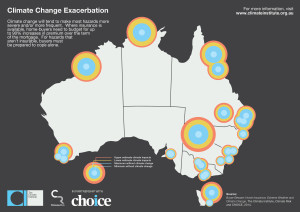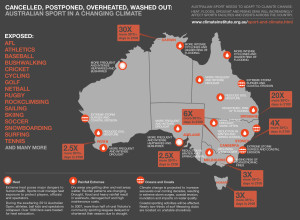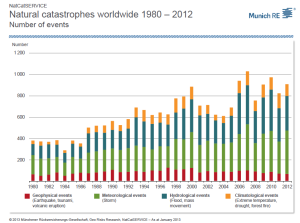What you will find on this page: Community Resilience Reader (book); can planting trees save our climate?; adaptation not as easy as first thought; cost of natural disasters & resilience (report); Think Resilience (self directed course); practical knowledge for adaptation; resilience benchmarking for community organisations; adapting Australia to climate change; risk assessment; insurance industry tracking risk; maps & graphs; resilient societies (video); new future ideas (video); cost of adaptation; Earth Economics; fire management; latest news
“We cannot solve our problems with the same level of thinking that created them” – Einstein
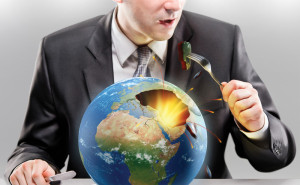
Efforts to build community resilience often focus on growing the capacity to “bounce back” from disruptions, like those caused by climate change. But climate change is not the only crisis we face, nor is preparing for disruption the only way to build resilience. Truly robust community resilience should do more. It should engage and benefit all community members, and consider all the challenges the community faces—from rising sea levels to a lack of living wage jobs. And it should be grounded in resilience science, which tells us how complex systems—like human communities—can adapt and persist through changing circumstances. Six Foundations for Building Community Resilience (Post Carbon Institute) describes how communities can approach the full scope of the 21st century’s challenges equitably and sustainably. Access report here or click on the image. Also you might like to access another PCI report “Can We Have Our Climate and Eat It Too?“
Latest News 15 June 2017, New York Times, The Dutch Have Solutions to Rising Seas. The World Is Watching. In the waterlogged Netherlands, climate change is considered neither a hypothetical nor a drag on the economy. Instead, it’s an opportunity……No place in Europe is under greater threat than this waterlogged country on the edge of the Continent. Much of the nation sits below sea level and is gradually sinking. Now climate change brings the prospect of rising tides and fiercer storms. From a Dutch mind-set, climate change is not a hypothetical or a drag on the economy, but an opportunity. While the Trump administration withdraws from the Paris accord, the Dutch are pioneering a singular way forward. It is, in essence, to let water in, where possible, not hope to subdue Mother Nature: to live with the water, rather than struggle to defeat it. The Dutch devise lakes, garages, parks and plazas that are a boon to daily life but also double as enormous reservoirs for when the seas and rivers spill over. You may wish to pretend that rising seas are a hoax perpetrated by scientists and a gullible news media. Or you can build barriers galore. But in the end, neither will provide adequate defense, the Dutch say. And what holds true for managing climate change applies to the social fabric, too. Environmental and social resilience should go hand in hand, officials here believe, improving neighborhoods, spreading equity and taming water during catastrophes. Climate adaptation, if addressed head-on and properly, ought to yield a stronger, richer state. This is the message the Dutch have been taking out into the world. Dutch consultants advising the Bangladeshi authorities about emergency shelters and evacuation routes recently helped reduce the numbers of deaths suffered in recent floods to “hundreds instead of thousands,” according to Mr. Ovink. Read More here 23 May 2017, The Conversation, Australian farmers are adapting to climate change. 2016-17 has been a great year for Australian farmers, with record production, exports and profits. These records have been driven largely by good weather, in particular a wet winter in 2016, which led to exceptional yields for major crops. Unfortunately, these good conditions go very much against the long-term trend. Recent CSIRO modelling suggests that changes in climate have reduced potential Australian wheat yields by around 27% since 1990. While rising temperatures have caused global wheat yields to drop by around 5.5% between 1980 and 2008, the effects in Australia have been larger, as a result of major changes in rain patterns. Declines in winter rainfall in southern Australia have particularly hit major broadacre crops (like wheat, barley and canola) in the key southeastern and southwestern cropping zones. There is strong evidence that these changes are at least partly due to climate change. Climate change is affecting farm productivity A recent study by the Australian Bureau of Agricultural and Resource Economics and Sciences (ABARES) confirms that changes in climate have had a negative effect on the productivity of cropping farms, particularly in southwestern Australia and southeastern Australia. In general, the drier inland parts of the cropping zone have been more heavily affected, partly because these areas are more sensitive to rainfall decline. Smaller effects have occurred in the wetter zones closer to the coast. Here less rain can have little effect on – and can even improve – crop productivity. Farmers are reacting However, it’s not all bad news. The study finds that Australian farmers are making great strides in adapting to climate change. Much has been written about the fact that farm productivity in Australia has essentially flatlined since the 1990s, after several decades of consistent growth. The ABARES research suggests that changes in climate go some way towards explaining this slowdown. After controlling for climate, there has been relatively strong productivity growth on cropping farms over the past decade. However, while farms have been improving, these gains have been offset by deteriorating conditions. The net result has been stagnant productivity. Read More here 5 April 2017, ECOS, Before the storm. It’s a catastrophe in anyone’s book, not least those of insurance companies anticipating the tens of thousands of claims likely to be lodged.As the floods surged south in the days after Cyclone Debbie hit landfall near Bowen in north Queensland on March 28, a natural disaster was declared in five major centres in northern New South Wales.Citing the chairman of the Insurance Council of Australia, the Australian Financial Review said “in insurance terms, a catastrophe means a disaster that causes a significant number of claims in a region” and for Cyclone Debbie that could be claims over $1 billion. CSIRO’s Dr Chi-Hsiang Wang and colleagues have been researching the cost implications of extreme weather events but with a focus at the other end – predicting the likely cost before the storms. Counting the cost of extreme events Deloitte Access Economics last year delivered a report on building resilient infrastructure which estimated that, between 2002-03 and 2010-11, an annual average of more than $450 million was spent by Australian governments on restoring essential public infrastructure following extreme weather. If it’s business-as-usual, the report said, $17 billion is expected to be spent on direct replacement costs of essential infrastructure due to natural disasters between 2015 and 2050. These estimates don’t factor in the impacts of climate change. In the case of Cyclone Debbie, the wind intensity exceeded the limitations of the building specifications. “It’s not a surprise that we see considerable damage because the intensity is so high,” says Dr Wang. Until now, a cyclone with the force of Debbie was considered a once in a 2,000 year event by Australian design standard for wind actions (AS/NZS 1170.2:2011). That may change. “There’s a consensus among scientists, although not as strong as the consensus around rising global temperatures, that for some tropical cyclone basins around the world they are likely to see events of increased intensity,” he adds. What’s missing? Dr Wang says the current practice for wind impact assessment of physical infrastructure uses only wind intensity (in terms of wind gust) to gauge the damage potential of windstorms. “This ignores other threats brought upon by the accompanying rainfall and storm surge,” he says. Read More here 29 March 2017, Renew Economy, How AEMO’s new boss will reform Australia’s energy vision. Audrey Zibelman, the new chief executive of the Australian Energy Market Operator, has been in the job for little over a week, but is already making her mark, signalling the biggest shift in energy management philosophy in a generation. If Australia’s fossil fuel industry had hoped that last September’s state-wide blackout would lead to a u-turn on the shift to cleaner and decentralised energy system, then the release of the Australian Energy Market Operator’s final report in the event would leave them bitterly disappointed. And if they had any thoughts that the new CEO of AEMO, Audrey Zibelman, was going to afford them the indulgences that they had gotten used to over the last few decades, then they are going to be disappointed on that too. Several hundred energy market participants converged on Adelaide’s Hilton Hotel on Wednesday to hear the findings from the final report into the now notorious system black and, more crucially, to hear the first public insights from the new AEMO boss. “Thank god you’re here,” said the Grattan Institute’s Tony Wood, referring to a former TV program, but echoing the mood of most. And while many in mainstream media chose to focus on the role of wind farms in South Australia’s “system black,” and wonder why the shuttered Northern coal fired station is not being fired up again, both AEMO and its new boss were looking to the future, and with a sense of urgency. Zibelman is the former head of New York’s Public Service Commission, charged with implementing that state’s ambitious Reforming the Energy Vision program, and its target of 50 per cent renewable energy by 2030, which is going to focus a lot on decentralised generation. “When I arrived on the scene in New York, it was just after Hurricane Sandy,” she said in her opening comments on Wednesday. “After seeing New York city witout electricity for a number of days and people living in 40-storey buildings walking down to get water and cell phones charged – these were not young people, these were grandmas and granddads – it was clear that this industry was going to have to fundamentally change.” And Australia, she says, is actually going to lead the world on this, both on the breadth and the scale of what she, chief scientist Alan Finkel and many others describes as the inevitable and unstoppable energy transition. “We built systems in the 20th century around large centralised power plants,” Zibelman said. “That made a lot of sense. Now the industry is changing, cutomer preferences are changing, choices are changing, so we are creating what lot of people are calling the internet of things. “The idea is that you need to create a very flexible network that can respond in real time, and truly real time, to a lot of different events and a lot different sequences. “That is going to need a whole different approach … and my excitement about Australia is that, quite frankly, Australian is going to be leading the world on this.” Read More here End Latest News Can planting trees save our climate? 16 July 2019 RealClimate: In recent weeks, a new study by researchers at ETH Zurich has hit the headlines worldwide (Bastin et al. 2019). It is about trees. The researchers asked themselves the question: how much carbon could we store if we planted trees everywhere in the world where the land is not already used for agriculture or cities? Since the leaves of trees extract carbon in the form of carbon dioxide – CO2 – from the air and then release the oxygen – O2 – again, this is a great climate protection measure. The researchers estimated 200 billion tons of carbon could be stored in this way – provided we plant over a trillion trees. The media impact of the new study was mainly based on the statement in the ETH press releasethat planting trees could offset two thirds of the man-made CO2 increase in the atmosphere to date. To be able to largely compensate for the consequences of more than two centuries of industrial development with such a simple and hardly controversial measure – that sounds like a dream! And it was immediately welcomed by those who still dream of climate mitigation that doesn’t hurt anyone. Unfortunately, it’s also too good to be true. Because apples are compared to oranges and important feedbacks in the Earth system are forgotten. With a few basic facts about the CO2increase in our atmosphere this is easy to understand. Read more here Global warming threatens massive forest losses (red), especially in the tropics. Fig. 3 from Bastin et al., Science 2019 Adaptation not as easy as first thought – some examples ALSO REFER TO “PEOPLE STRESS” PAGE FOR MORE EXAMPLES Building resilience to natural disasters in our states and territories Think Resilience – self directed course Would you like to increase your understanding of the interrelated issues surrounding resilience building? Have a look at the Post Carbon Institute‘s course below The Think Resilience Self-Directed Course consists of 22 short videos (between 5 and 20 minutes long) that explore the interrelated crises of the twenty-first century, and what we as citizens, students, and community leaders can do to respond to them. The course is designed to serve as an introduction to a broad range of topics rather than an in-depth exploration. By enrolling in the self-directed course, you get access to all the videos, as well as printable transcripts, suggested readings, and discussion forums where you can interact with other students on the topics covered. If you would like to earn a Certificate of Course Completion, you must provide substantive answers to the seven quizzes that appear throughout the course. (If you do not want a certificate you may ignore the quizzes.) Access more here The Community Resilience Reader: Essential Resources for an Era of Upheaval 1. Synthesis summaries: These short summaries (6-8 pages) will provide a simple synthesis based in the first instance on the findings of research from NCCARF Phase 1. They are based on themes identified from research projects (Portfolio themes) and stakeholder needs analysis (priority risk areas). They cover the following topics: heatwaves; floods; cyclones & windstorms; bushfire; community vulnerability & resilience; terrestrial ecosystems. 2. Climate change adaptation briefing notes: These short one-page briefings are designed for specific sectors/decision makers. They provide a brief introduction to the key issues, climate impacts and adaptation options for that sector. The following briefing notes are available: community service organisations; finance officers; planners; engineers; local government executive; elected representatives. 3. Policy information briefs: Complementing the Policy Guidance Brief (PGB) series, these five Policy Information Briefs focus on key locations or challenges for Australia in the future. The briefs are aimed at policymakers in state and federal government. In each brief, we examine the features that characterise the challenges and their causes (both climatic and, in the broadest sense, environmental). The briefs explore the extent to which adaptive capacity exists, and what is needed for mobilisation. Adaptation options are considered and evaluated taking into account financial and welfare costs of the action and the avoided impacts. The five Policy Information Briefs are: Great Barrier Reef; climate ready cities; climate adaptive northern development’ sustainable and thriving rural communities under climate change; adapting Australia’s trade and aid policies to climate change. 4. Adaptation library: NCCARF have developed an improved search interface for information held on the NCCARF website. The Adaptation Library can be accessed here. Do you belong to a community organisation? Resilient Community Organisations is a toolkit to support community service organisations (CSO) assess their preparedness and build resilience to disasters and emergencies. Many CSO’s have been affected this week by extreme weather, with violent storms and flooding affecting much of the East Coast. And, as many of you would know, community services are often the first port of call for many people affected by a disaster. But how ready are they? How prepared is the community sector to support and protect the people most at risk if a disaster hits? Click here to read ACOSS CEO Cassandra Goldie’s opinion piece on long-term effects of extreme weather events in today’s Sydney Morning Herald. In 2013, ACOSS conducted a survey (funded by NCCARF) – the world’s first – to find out how vulnerable the CSO sector is to extreme weather events. The findings were alarming – 50% of organisations would not be able to operate for a week, and a further 25% would close permanently if their buildings and critical infrastructure were damaged. To help CSO’s find out whether their organisations are prepared, ACOSS have developed the Disaster Resilience Benchmarking Tool This tool has six steps, each with its own specific resources, to help CSO’s assess and build their capacity for weathering a disaster. CSO’s can work through the tools at your their own pace; By planning ahead, and ensuring that CSO’s are prepared, when disasters and emergencies strike, they will be able to support those affected the most. Be one of the first to try out this tool, and work out whether your organisation is ready. Share it with your networks and help us get the word out to get prepared. ACCESS THE TOOL HERE 28 July 2016, VCOSS, Communities working together in emergency planning. VCOSS teamed up with the Municipal Association of Victoria in June 2016 to present the third annual Emergency Management Forum, Working with community in emergency planning. The goal was to increase the levels of cooperation and collaboration between local government and the community sector. For those of you who were unable to attend the event or simply wish to relive a particular speaker’s contribution (and who can blame you), we’ve prepared a series of useful summaries, and also included are links to the speakers’ presentations in PDF format (kindly hosted on the MAV website). Access summaries here November 2015: Third Sector / Not-for-Profit Sector Recovery in Post-Earthquake Christchurch Report NOTE: Even though this report refers to earthquake recovery it holds many transferable learnings for ANY major community wide extreme event. Access full report here INTRODUCTION: The Third Sector (sometimes called the community sector, or the not for profit sector) has been, and remains, central to helping communities and individuals recover after the Christchurch Earthquakes. Many organisations in the Third Sector were affected by the earthquakes. This research was aimed at understanding how these organisations are doing five years on and what earthquake-related issues are still going on for the sector. A literature review (See Appendix 1) looking at the recovery of other cities that had faced disaster, and recovery in Christchurch to date, revealed that likely ongoing effects would include: The view from the front line: Adapting Australia to climate change Prof. Jean Palutikof founding Director of the National Climate Change Adaptation Research Facility (NCCARF) at Griffith University, provides a graphic picture Why do I think her view is worth considering? Professor Palutikof was based at the UK Met Office during which time she managed the production of the Intergovernmental Panel on Climate Change (IPCC) Fourth Assessment Report for Working Group II (Impacts, Adaptation and Vulnerability). Professor Palutikof is among the foremost scholars of climate change adaptation and was lead author and review editor for several assessments of the Intergovernmental Panel on Climate Change (IPCC). Access article here NCCARF Adaptation Library: The NCCARF Adaptation Library holds and provides links to research reports and information to help support decision makers throughout Australia as they prepare for and manage the risks of climate change and sea-level rise. Search the NCCARF Adaptation Library by selecting location, resource type and/or topics, as well as key words. Mark resources as a favourite to create a list of resources to remember. Access Library here NCCARF REPORT: Supporting evidence-based adaptation decision-making in Victoria: A synthesis of climate change adaptation research. Access report here Before you start changing things you need to understand the situation and the risks involved In a foreword to the latest report, Baroness Anelay, a minister at the British foreign office, writes that assessing the risks surrounding nuclear disarmament and non-proliferation means understanding inter-dependent elements − including what science says is possible, what other countries may intend, and systemic factors such as regional power dynamics. “The risk of climate change demands a similarly holistic assessment,” she says. She concludes: “How much do we care about the effects of climate change? How important is it that we act to avoid them? What probability of their occurrence can we tolerate?…The answers to these questions depend in part on how we value human life – both now, and in the future.” The report is not the first to put climate chaos and nuclear devastation in the same category of risk, but its sponsorship by one of the world’s nuclear powers is eloquent. It says the most important political decision is how much effort to exert on countering climate change, taking into account what we are doing to the climate, how it may respond, what that could do to us, and what we might then do to each other. This report argues that the risks of climate change should be assessed in the same way as risks to national security, financial stability, or public health. That means we should concentrate especially on understanding what is the worst that could happen, and how likely that might be. The report presents a climate change risk assessment that aims to be holistic, and to be useful to anyone who is interested in understanding the overall scale of the problem. It considers: “As the last of our contributing authors wrote, we have a battle on our hands: a battle to preserve a safe climate for the future. Powerful forces are engaged in this battle, whether we notice them or not. The power of vested interests to resist change, the inertia of infrastructure systems, and the unyielding laws of thermodynamics all seem to be arrayed against us.” Access Climate News Network article here – Access full report here Source: Buyer Beware Insurance Climate Extremes Report An example: How an extreme event/damage is not linear Extracts from article: It has been said that “the house is the first line of defence against hazards”. Forensic analyses often reveal that structural failures of infrastructure (e.g. houses, electrical distribution lines, communications structures, dams) result when climate extremes approach the structure’s critical design values and then exceed its safety limits. Forensic studies show that, above critical thresholds, small increases in weather and climate extremes have the potential to bring large increases in damage to existing infrastructure. These studies indicate that damage from extreme weather events tends to increase dramatically above critical thresholds, even though the high-impact storms associated with these damages may not be much more severe than the type of storm intensity that occurs regularly each year. An investigation of claims by the Insurance Australia Group (IAG), indicates that a 25 per cent increase in peak wind gust strength above a critical threshold can generate a 650 per cent increase in building claims (Coleman, 2002)…. Similar results have been obtained for flood and hailstone damages (Freeman and Warner, 2001; Munich Re, 2005; Swiss Re, 1997. Insurance industry response to increasing climate change risk 3 February 2015, Risk Management, Climate Change and its Impact on the Insurance Industry: It may be hard for people who experienced a polar vortex to believe, but 2014 was the hottest year ever globally. This global warming has consequences. The U.S. Supreme Court recognized in 2007 that there is a relationship between global warming and severe weather events. And severe weather always has been a driver of property and casualty claims. It is no surprise that the insurance industry has been considering the impact of climate change for years. For example, Munich Re has done studies estimating that domestic weather-related losses have increased fourfold since 1980 and that extreme weather events led to more than $500 billion in covered losses between 1980 and 2011. The incidence of hurricanes, superstorms, and mega-tornados will increase as temperatures rise. Flooding incidents will become more frequent as sea levels rise as a result of climate change. In addition to hurricanes, superstorms like Sandy, and mega-tornados, scientists predict 50% more lightning strikes will occur domestically over the next century based upon increases in precipitation and temperature. Additional risks include habitat loss, famine, and an increase in diseases such as malaria because of wetter weather conditions spawning mosquitoes. An increase in weather related claims may put financial stress on some sectors of the insurance industry. In 2010, the National Association of Insurance Commissioners (NAIC) adopted a simple eight-question disclosure survey assessing the risk of potential-insurance-company insolvency resulting from climate change and related global warming. Read More here For those into sport What would be the characteristics of a Resilient Society? Wanting some ideas for a new future? Resilience.org supports the building of community responses to the many inter-related crises of our time with information, resources and connections. Resilience is a program of Post Carbon Institute, a nonprofit organization dedicated to helping the world transition away from fossil fuels and build sustainable, resilient communities.It is an excellent place to find what people are doing to transform the way they are living and rebuilding their communities An example follows… 1 May 2015, Resilience.org: After Disaster, Tactical Urbanism Builds Resilience (Mike Lydon) “…In this way, Christchurch has become an epicenter of tactical urbanism – a strategy that harnesses the ingenuity and spirit of communities to improve city life. Tactical (also called emergent, adaptive, and user generated) urbanism deploys a broad range of short-term, low-cost, scalable interventions…” Read More here EXPLORE The Great Transition Initiative which is an online forum of ideas and an international network for the critical exploration of concepts, strategies, and visions for a transition to a future of enriched lives, human solidarity, and a resilient biosphere. By enhancing scholarly discourse and public awareness of possibilities immanent in these troubled times, and by fostering a broad network of thinkers and doers, it aims to contribute to a new praxis for global transformation. 23 April 2015, WRI, The Costs of Climate Adaptation, Explained in 4 Infographics: s global temperatures climb, so do the costs of adapting to a warmer world. Severe weather events are becoming more frequent, creating major budget pressures for national governments, especially those in the developing world. So how much money will the world need to protect itself from these impacts? And how much money are we currently spending to solve the problem? Here’s everything you need to know about the current state of adaptation finance: Read More here Earth Economics: What is our planet worth? Fire Management – the old, a new way forward From the Autumn 2015, issue 63, of the Victorian Landcare newsletter, “Landcare groups in parts of north east Victoria are partnering with Traditional Owners ro revive the use of traditional fire knowledge. The partners are using fire as a land management tool to reduce fuel loads and are conducting field trials to rejuvenate native grasses, train young indigenous men and regenerate healthy ecosystems. Read More here (page 4) For more background on traditional fire management: Creative Spirits: Aboriginal fire management. When fire-managing country Aboriginal people consider a plethora of parameters.Read why cool fires are key and why the canopy is sacred. 8 October 2009 ABC Catalyst, Carbon Country Update: “Right across northern Australia, uncontrolled wildfires (seen here in red) incinerate an area bigger than Victoria every year. And that’s a greenhouse problem too. This annual firestorm emits more carbon dioxide than all of Australia’s coal-fired power stations combined….” Read More here 7 November 2015, ABC: Scientists working together with indigenous land-managers have reduced Australia’s greenhouse gas emissions by half a million tonnes. Video and read More here 25 May 2013 Landline, Pip Courtney: “Although the Australian continent is shaped by fire and flood, large-scale devastating bushfires are a man-made modern phenomenon. That’s the view of distinguished historian Bill Gammage, who argues that Australians have failed to understand their environment…” Read More here
 Please login to to access the chapters of The Community Resilience Reader. If you do not have an account, click REGISTER to take a short pre-registration survey; after you complete the survey we will send you a personal code that will allow you to create an account.The sustainability challenges of yesterday have become today’s resilience crises. National and global efforts have failed to stop climate change, transition from fossil fuels, and reduce inequality. We must now confront these and other increasingly complex problems by building resilience at the community level. But what does that mean in practice, and how can it be done in a way that’s effective and equitable?
Please login to to access the chapters of The Community Resilience Reader. If you do not have an account, click REGISTER to take a short pre-registration survey; after you complete the survey we will send you a personal code that will allow you to create an account.The sustainability challenges of yesterday have become today’s resilience crises. National and global efforts have failed to stop climate change, transition from fossil fuels, and reduce inequality. We must now confront these and other increasingly complex problems by building resilience at the community level. But what does that mean in practice, and how can it be done in a way that’s effective and equitable? 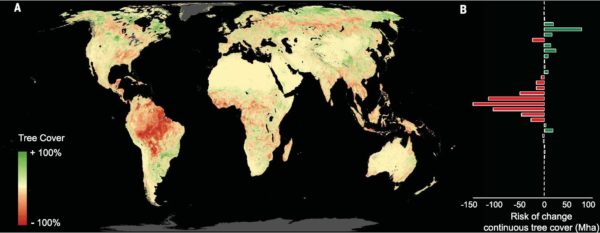
 2 May 2018. Bloomberg, …..Until recently, the guiding philosophy behind attempts to protect U.S. homes and cities against the effects of climate change was to build more defenses. Houses can be perched on stilts, surrounded by barriers, buttressed with storm proof windows and roofs. Neighborhoods can be buffered by seawalls for storm surges, levees for floods, firebreaks for wildfires. Defenses are an instinctive response for a species that’s evolved by taming the natural world. But sometimes the natural world won’t be tamed. Or, more precisely, sometimes engineered solutions can no longer withstand the unrelenting force of more water, more rain, more fires, more wind. Within 20 years, says the Union of Concerned Scientists, 170 cities and towns along the U.S. coast will be “chronically inundated,” which the group defines as flooding of at least 10 percent of a land area, on average, twice a month. By the end of the century, that category will grow to include more than half of the communities along the Eastern Seaboard and Gulf Coast—and that’s if the rate of climate change doesn’t accelerate. In their less guarded moments, officials in charge of this country’s disaster programs have begun to acknowledge the previously unthinkable: Sometimes the only effective way to protect people from climate change is to give up. Let nature reclaim the land and move a neighborhood out of harm’s way while it still is one. But even when all the most obvious ingredients are in place—from federal money and local buy-in to cheap, dry land right next door—moving is hard. Sidney has yet to remove more than a few dozen homes from the flood plain or break ground on land away from the river. Its failure so far illustrates how unprepared the U.S. is politically, financially, and emotionally to re-create even a single community away from rising waters in an organized way, preserving some semblance of its character and history. Read more here
2 May 2018. Bloomberg, …..Until recently, the guiding philosophy behind attempts to protect U.S. homes and cities against the effects of climate change was to build more defenses. Houses can be perched on stilts, surrounded by barriers, buttressed with storm proof windows and roofs. Neighborhoods can be buffered by seawalls for storm surges, levees for floods, firebreaks for wildfires. Defenses are an instinctive response for a species that’s evolved by taming the natural world. But sometimes the natural world won’t be tamed. Or, more precisely, sometimes engineered solutions can no longer withstand the unrelenting force of more water, more rain, more fires, more wind. Within 20 years, says the Union of Concerned Scientists, 170 cities and towns along the U.S. coast will be “chronically inundated,” which the group defines as flooding of at least 10 percent of a land area, on average, twice a month. By the end of the century, that category will grow to include more than half of the communities along the Eastern Seaboard and Gulf Coast—and that’s if the rate of climate change doesn’t accelerate. In their less guarded moments, officials in charge of this country’s disaster programs have begun to acknowledge the previously unthinkable: Sometimes the only effective way to protect people from climate change is to give up. Let nature reclaim the land and move a neighborhood out of harm’s way while it still is one. But even when all the most obvious ingredients are in place—from federal money and local buy-in to cheap, dry land right next door—moving is hard. Sidney has yet to remove more than a few dozen homes from the flood plain or break ground on land away from the river. Its failure so far illustrates how unprepared the U.S. is politically, financially, and emotionally to re-create even a single community away from rising waters in an organized way, preserving some semblance of its character and history. Read more here 25 April 2018, Bloomberg, The Fighting Has Begun Over Who Owns Land Drowned by Climate Change. One April morning in 2016, Daryl Carpenter, a charter boat captain out of Grand Isle, La., took some clients to catch redfish on a marsh pond that didn’t use to exist. Coastal erosion and rising seas are submerging a football field’s worth of Louisiana land every hour, creating and expanding ponds and lakes such as the one onto which Carpenter had piloted his 24-foot vessel. Suddenly, another boat pulled up beside Carpenter’s. “You’re trespassing,” the other driver declared, before chasing him and his clients down the bayou. The sheriff’s office later threatened to arrest Carpenter if he ever returned to the pond. There was just one problem: Under Louisiana state law, any waterways that are accessible by boat are supposed to be public property, argued Carpenter—even what was previously unnavigable swampland. Carpenter sued the sheriff, as well as Castex Energy Inc., which owns the property around the pond, for interfering with his business. A district court decided against him in March, noting that an earlier ruling found that the territory was unnavigable swampland when the state sold it into private ownership in the 1800s. Carpenter is appealing that ruling. Carpenter’s suit reflects a legal and political dilemma that’s beginning to reverberate around the country: As seas rise and coasts wash away, who owns the land that goes underwater? Read more here
25 April 2018, Bloomberg, The Fighting Has Begun Over Who Owns Land Drowned by Climate Change. One April morning in 2016, Daryl Carpenter, a charter boat captain out of Grand Isle, La., took some clients to catch redfish on a marsh pond that didn’t use to exist. Coastal erosion and rising seas are submerging a football field’s worth of Louisiana land every hour, creating and expanding ponds and lakes such as the one onto which Carpenter had piloted his 24-foot vessel. Suddenly, another boat pulled up beside Carpenter’s. “You’re trespassing,” the other driver declared, before chasing him and his clients down the bayou. The sheriff’s office later threatened to arrest Carpenter if he ever returned to the pond. There was just one problem: Under Louisiana state law, any waterways that are accessible by boat are supposed to be public property, argued Carpenter—even what was previously unnavigable swampland. Carpenter sued the sheriff, as well as Castex Energy Inc., which owns the property around the pond, for interfering with his business. A district court decided against him in March, noting that an earlier ruling found that the territory was unnavigable swampland when the state sold it into private ownership in the 1800s. Carpenter is appealing that ruling. Carpenter’s suit reflects a legal and political dilemma that’s beginning to reverberate around the country: As seas rise and coasts wash away, who owns the land that goes underwater? Read more here 23 March 2018, Bloomberg, Latest Climate Threat for Coastal Cities: More Rich People. When Hurricane Irma reached Florida’s Big Pine Key in September, it caused the floor of Terry and Sharon Baron’s cream-colored mobile home to collapse. On Marathon Key, twenty miles north, the winds lifted Diane Gaffield’s mobile home off its concrete pad and smashed it against her neighbor’s house. A few blocks over, Kimberly Ruth’s mobile home simply vanished into the storm. Irma was only the start of their troubles. The Florida Keys building code effectively prohibits replacing or substantially repairing damaged mobile homes because of their vulnerability to hurricanes. That leaves people living in one of the nearly 1,000 trailers and RVs damaged or destroyed by the storm with three options: find sturdier but more expensive accommodation, repair or replace the homes and hope code officials don’t notice, or leave the Keys. “There’s no place to live,” said Sharon Baron. Around the country, the government’s response to extreme weather is pushing lower-income people like the Barons away from the waterfront, often in the name of safety. Those homes, in turn, are often replaced with more costly houses, such as those built higher off the ground and are better able to withstand storms. Housing experts, economists and activists have coined the term “climate gentrification.” Read More here
23 March 2018, Bloomberg, Latest Climate Threat for Coastal Cities: More Rich People. When Hurricane Irma reached Florida’s Big Pine Key in September, it caused the floor of Terry and Sharon Baron’s cream-colored mobile home to collapse. On Marathon Key, twenty miles north, the winds lifted Diane Gaffield’s mobile home off its concrete pad and smashed it against her neighbor’s house. A few blocks over, Kimberly Ruth’s mobile home simply vanished into the storm. Irma was only the start of their troubles. The Florida Keys building code effectively prohibits replacing or substantially repairing damaged mobile homes because of their vulnerability to hurricanes. That leaves people living in one of the nearly 1,000 trailers and RVs damaged or destroyed by the storm with three options: find sturdier but more expensive accommodation, repair or replace the homes and hope code officials don’t notice, or leave the Keys. “There’s no place to live,” said Sharon Baron. Around the country, the government’s response to extreme weather is pushing lower-income people like the Barons away from the waterfront, often in the name of safety. Those homes, in turn, are often replaced with more costly houses, such as those built higher off the ground and are better able to withstand storms. Housing experts, economists and activists have coined the term “climate gentrification.” Read More here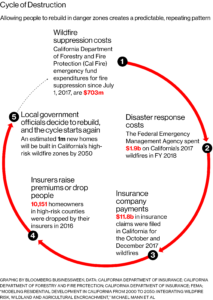
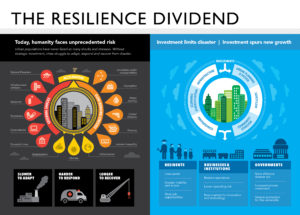
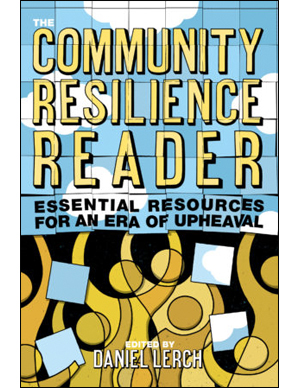 11 September 2017, Coming mid-October 2017 from Island Press! National and global efforts have failed to stop climate change, transition from fossil fuels, and reduce inequality. We must now confront these and other increasingly complex problems by building resilience at the community level. The Community Resilience Reader combines a fresh look at the challenges humanity faces in the 21st century, the essential tools of resilience science, and the wisdom of activists, scholars, and analysts working with community issues on the ground. It shows that resilience is a process, not a goal; that resilience requires learning to adapt but also preparing to transform; and that resilience starts and ends with the people living in a community.
11 September 2017, Coming mid-October 2017 from Island Press! National and global efforts have failed to stop climate change, transition from fossil fuels, and reduce inequality. We must now confront these and other increasingly complex problems by building resilience at the community level. The Community Resilience Reader combines a fresh look at the challenges humanity faces in the 21st century, the essential tools of resilience science, and the wisdom of activists, scholars, and analysts working with community issues on the ground. It shows that resilience is a process, not a goal; that resilience requires learning to adapt but also preparing to transform; and that resilience starts and ends with the people living in a community. 10 June 2016, ACOSS is launching a Disaster Resilience Benchmarking Tool – a project proudly supported by NCCARF’s Vulnerable Communities Network (VCN)
10 June 2016, ACOSS is launching a Disaster Resilience Benchmarking Tool – a project proudly supported by NCCARF’s Vulnerable Communities Network (VCN)
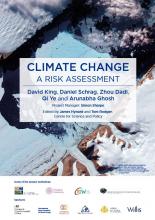 18 July 2015, Climate News Network/University of Cambridge,Climate Change Risk Assessment: The UK government says that climate change poses risks that demand to be treated as seriously as the threat of nuclear war. Scientists from the UK, US, India and China say in a report commissioned by the UK that deciding what to do about climate change depends on the value we put on human life, both now and in years to come.
18 July 2015, Climate News Network/University of Cambridge,Climate Change Risk Assessment: The UK government says that climate change poses risks that demand to be treated as seriously as the threat of nuclear war. Scientists from the UK, US, India and China say in a report commissioned by the UK that deciding what to do about climate change depends on the value we put on human life, both now and in years to come.
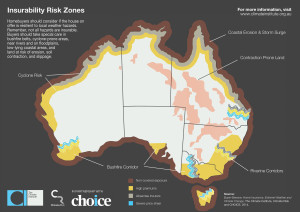 The insurance industry have been tracking the impacts of climate change for many years – they “get it” their existence and profits depend on it! Their risk assessments provide an excellent source of data for governments at all levels to consider when prioritising planning and funding decisions for adaptation measures.
The insurance industry have been tracking the impacts of climate change for many years – they “get it” their existence and profits depend on it! Their risk assessments provide an excellent source of data for governments at all levels to consider when prioritising planning and funding decisions for adaptation measures. 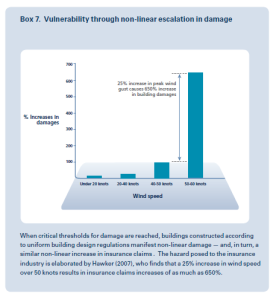 Source: Disaster risk reduction under current and changing climate conditions from the article is based on the scientific lecture given to Fifteenth World Meteorological Congress by the author entitled “Disaster risk reduction under current and changing climate conditions: important roles for the National Meteorological and Hydrological Services” (2007).
Source: Disaster risk reduction under current and changing climate conditions from the article is based on the scientific lecture given to Fifteenth World Meteorological Congress by the author entitled “Disaster risk reduction under current and changing climate conditions: important roles for the National Meteorological and Hydrological Services” (2007).

